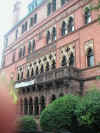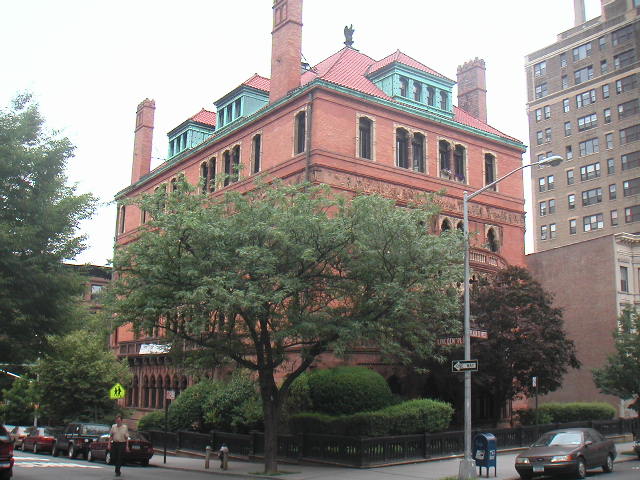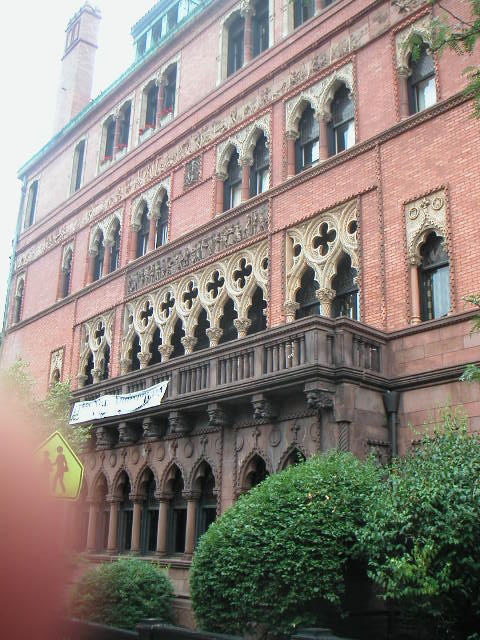 |
New York
Architecture Images- Park Slope, Brooklyn The Montauk Club Landmark |
|
architect |
Francis H. Kimball |
|
location |
25 Eighth Avenue. NE cor. Lincoln Place. 1889-1891. |
|
date |
1891 |
|
style |
Venetian Gothic |
|
type |
Club |
|
construction |
Brownstone, brick, terra-cotta, and verdigris copper. |
|
A Venetian Gothic palazzo, whose canal is the narrow lawn separating it
from its cast-iron fence. Remember the Ca d’Oro. But here in brownstone,
brick, terra-cotta, and verdigris copper. It bears the name of a local
tribe, which explains the 8th Avenue friezes at the 3rd and 4th stories,
honoring these former local natives. |
|
|
|
 |
|
|
 |
|
The Montauk Club has been a private club since it was
founded in 1889. The magnificent Club House was designed by the famed
New York architect Francis H. Kimball, who was inspired by a palace on
Venice’s Grand Canal. The Club House was completed in 1891 and its
Venetian gothic architecture, carved mahogany woodwork and beautiful
stained glass windows remain its signature features. The history of the Montauk Club is inextricably linked
to the history of Brooklyn. The Club was founded in 1889 in the midst of
the economic boom that followed the completion of the Brooklyn Bridge
six years earlier. As the population of the borough surged (from 570,000
in 1880 to almost 900,000 by 1894), construction of residential
buildings in the borough accelerated. Many of the area’s most prominent
families settled in newly-fashionable Park Slope. The founding members
of the Club included Charles Pratt, the founder of the Pratt Institute,
Richard Schermerhorn, who oversaw the construction of the Prospect Park
and Coney Island Railroad and Edwin C. Litchfield, the lawyer and
railroad developer who owned much of the property that became Park
Slope. Many of the people whose names now identify Brooklyn
neighborhoods and streets were founding members, including Dean,
Lefferts, Montgomery and Underhill. |
|
| with thanks to "The AIA Guide to New York" and http://www.montaukclub.com/home.cfm | |